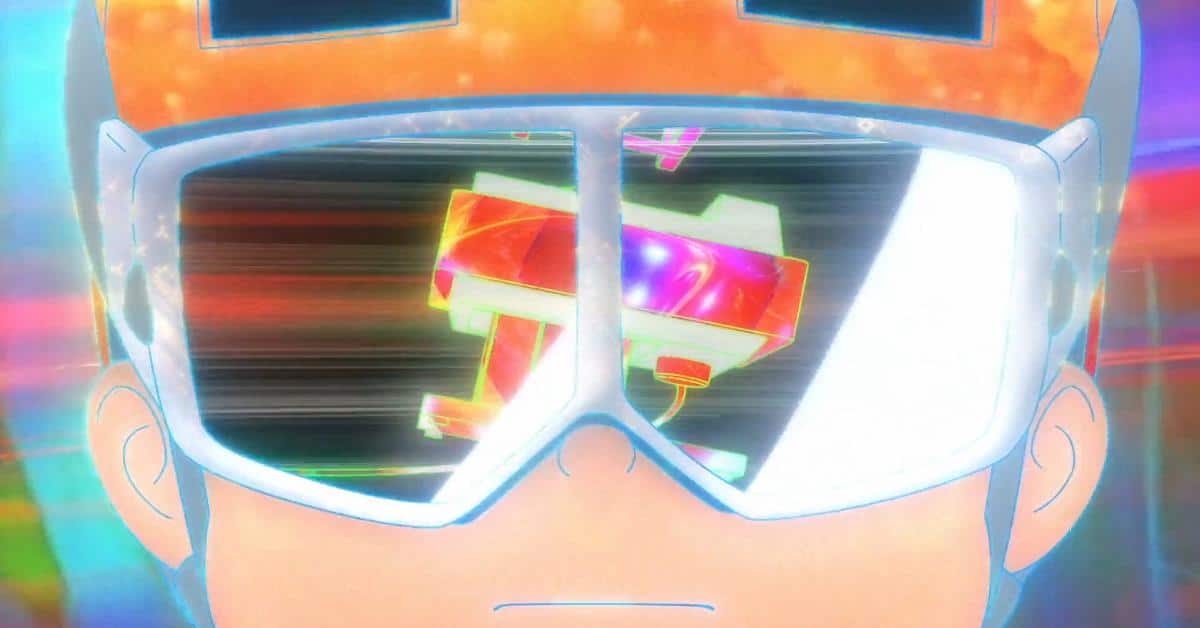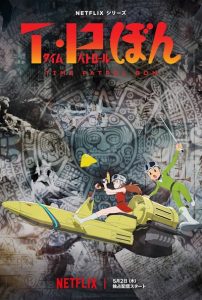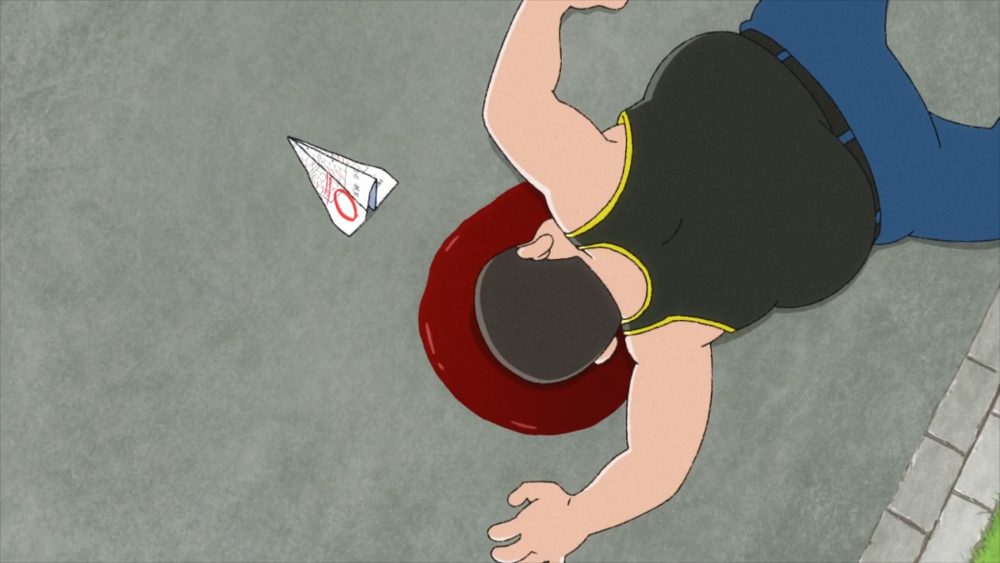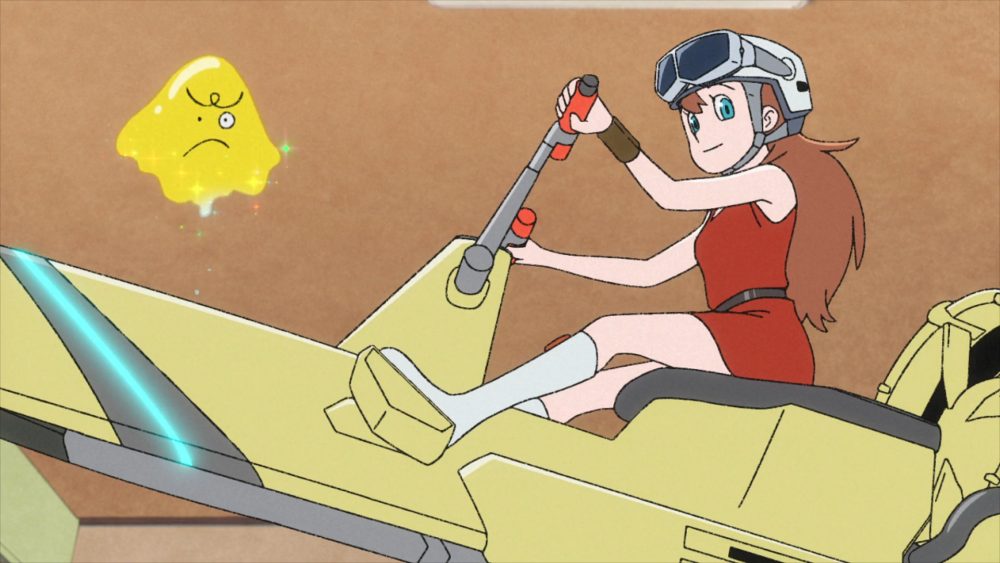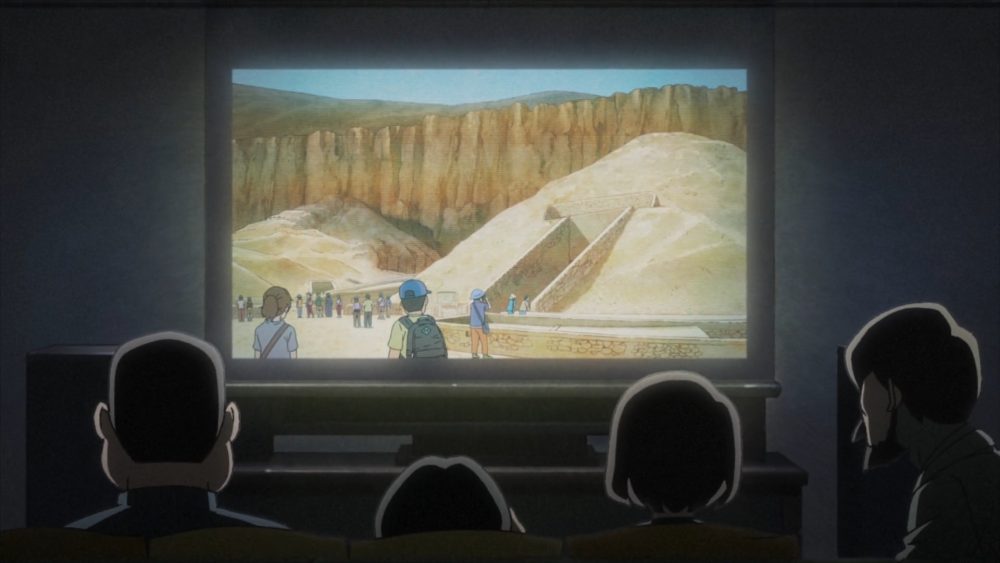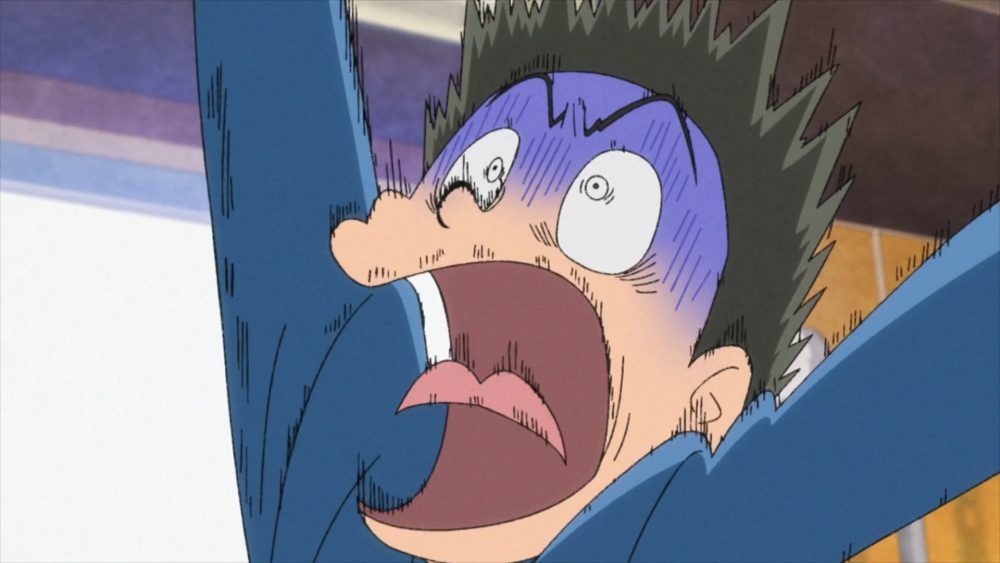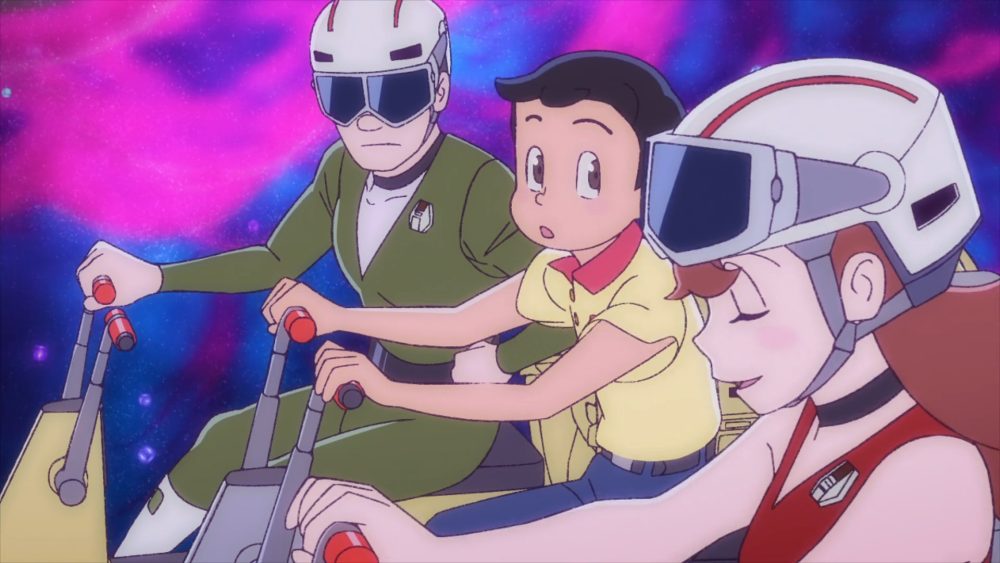Episodes #1-6 (2024)
Studio: Bones
Based on the manga by: Fujiko F. Fujio
Distribution: Netflix
Streaming: Netflix
Release Date: May 2nd, 2024
If you’re an anime or manga fan, you’ve likely seen pictures of a big blue robot cat with a pouch. That’s Doraemon: the creation of manga artist duo Fujiko Fujio. He’s one of the most popular pop culture characters to ever come out of Japan. But he wasn’t the duo’s only creation. Now their 1978 manga Time Patrol Bon has been adapted into T・P Bon, a 24-episode anime series by the prestigious studio Bones.
The series begins with an ordinary boy named Bon Namihira. One day he meets a cool older girl named Ream Stream. Ream is a member of the Time Patrol, a secret organization that travels through history saving unnecessary casualties of fate. She is aided by an extradimensional being named Buyoyon as well as countless hi-tech gadgets. So far so Doraemon. But then, in the very first episode, Bon accidentally pushes his best friend Tetsuo off the balcony. Tetsuo’s head cracks open and spills blood all over the pavement. I don’t know what I was expecting from T・P Bon, but it wasn’t child murder.
Welcome to the Time Patrol
T・P Bon is directed by Masahiro Ando, whose film Sword of the Stranger is an acknowledged action classic. I wondered briefly if Ando had been instructed to punch up Time Patrol Bon for contemporary audiences. Could it be that Netflix’s algorithm demanded dark and gritty reimaginings of Fujiko Fujio manga? Yet Tetsuo’s death (which is, of course, quickly undone by the Time Patrol) occurs in the manga as well. Violence is a part of T・P Bon’s palette. It had to be since it’s inextricable from history and the premise of the comic itself. People can only be saved if they’re under threat.
Some of the best manga artists of this time period saw no contradiction between cute characters and heavy theming. Osamu Tezuka’s Buddha killed off nearly every character that wasn’t Buddha throughout its original 14-volume run before offing Buddha himself at the end. Shotaro Ishinomori’s Robot Keiji grappled earnestly with racial discrimination. The darker scenes in T・P Bon are in keeping with that tradition.
Compressed learning
That said, T・P Bon is primarily a fantasy. Being a member of the Time Patrol earns you a flying motorbike called a Time Boat. Their other technology includes illusion projectors and weather control devices. Most useful of all is a Time Boat-mounted plug that allows for “compressed learning.” Bon doesn’t have to study anymore; all he needs to do is fill the Time Boat’s engine up with books and stick its plug in his head.
There are rules, though. The Time Patrol are not allowed to physically interact with their subjects. They are forbidden from skipping around too much in one time period or interfering with each other’s cases. Their devices cause countless inconveniences even when used correctly. This is frustrating for Bon and Ream but works to the show’s advantage. Problems are rarely solved in this series through direct violence. There’s always an out-of-the-box solution that builds on the logic of earlier episodes.
A tour of history
T・P BON lives or dies by the quality of its standalone stories. Each takes place in a different country and time period, including ancient Egypt, Mindanao, and the Tian Shan Mountains. We also meet historical figures including the pharaoh Djoser and the Buddhist monk Xuanzang. Common themes are familial responsibility and the perseverance of the human spirit. I found the fifth episode, about a witch trial in France, particularly memorable. We see the episode’s heroine captured, tortured, and then burned at the stake in a vivid dream sequence before the Time Patrol saves the day.
I appreciate that a number of them also address the contradictions of being a Time Patrol agent. For instance, if you can travel back and forth in time to help somebody out at every moment of need, when is the right time to move on? What happens when somebody is marooned in the past or the future?
A certain spice
All that said, T・P Bon lacks a certain spice. The six episodes I watched for this review all ended happily. Trauma can be undone, at least on a limited basis, through the power of time travel. So while the series is nastier than you’d expect from the Doraemon crew, it’s never as pointed as Tezuka or Ishinomori. I found myself longing for at least one genuinely shocking episode meant to make an impression on young viewers. It’s possible we’ll get one later, but it hasn’t happened yet.
Alongside director Mashiro Ando, T・P Bon was made by a talented crew including Masahiro Sato (character design and animation direction), Tatsuro Oonishi (art direction), and writers Yuuko Kakihara and Dai Sato. The beloved Michiru Oshima composes the score and theme song. Even Tensai Okamoto, a great director from Bones’s past, storyboards several episodes.
If I have a complaint it’s that the show’s 3DCG stands out against the 2D characters and objects. It’s used for crowd scenes, certain creatures, and even the Time Boats themselves. I understand that it’s a necessity in modern anime, particularly ambitious shows like this. Although, there are sequences throughout the episodes that I think suffer from their reliance on CG. The avalanche in the sixth episode is particularly unconvincing. The 3D camerawork, on the other hand, is well done.
The judgment of history
I never read Time Patrol Bon and have no nostalgia for it. Therefore I can’t help but wonder if T・P Bon is too violent for some kids and too simplistic for adults. Even so, I find it charming that the best action director at Bones was tasked with a lavish 24-episode adaptation of a 3-volume manga series by the creators of Doraemon. The next best thing to growing up with a work of art you love is seeing that love reflected in somebody else’s eyes. That’s more than enough to make T・P Bon worth watching, even if the series never exceeds the reasonable standard of quality it sets for itself.
The first 12 episodes of T・P Bon are currently available for streaming at Netflix.



